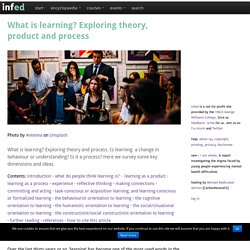

Intellectual Understanding. Social Emotional Learning. Uso de Ning y comunidades de práctica y de aprendizaje. Daniel Mocencahua y Yadira Navarro Desde Puebla, Puebla, México.

Se presentan las comunidades de práctica y aprendizaje que se están gestando en la facultad de electrónica dentro de una red social privada y cerrada. Se cuenta la experiencia desde la definición de la red hasta el uso cotidiano de la misma. Si quieres ver la grabación de esta charla, entra al siguiente enlace, selecciona reproducir, acepta la descarga del reproductor Webex y listo: *Si tienes problemas con el reproductor, en las próximas semanas estaremos colocando los videos en Youtube. Más sobre Daniel Mocencahua y Yadira Navarro Me gusta: Me gusta Cargando... Badgeville, The #1 Gamification Platform for Customer Loyalty and Employee Productivity. Who are "the millennials" and why should you as a marketer or manager care?

With over 76M members of the Gen Y population, they cannot be ignored. Did you know it costs $24,000 to replace each millennial hire that leaves, and 91% expect to stay in a job for less than 3 years? Or that by 2014, Gen Y will have over $1.4 trillion in spending power? We dived deep to research what makes millennials tick, and how both marketers and managers can get the most out of their workforces and audiences of this age bracket. In this blog, we will continue to cover how gamification helps solve many of the challenges to create more loyal customers and engaged employees.
Please use the HTML code below to embed this graphic <br /><br /><a data-cke-saved-href="<a href=" href="<a href=" alt="Rise of the Millennials Infographic by Badgeville, The Gamification Platform" data-cke-saved-src="<a href=" src="<a href=" width="100%" /></a><br /> Learning Theories. THE BRAIN FROM TOP TO BOTTOM.
Teorías del aprendizaje - home. Learning theory: models, product and process. Photo by Antenna on Unsplash Contents: introduction · what do people think learning is?

· learning as a product · learning as a process · experience · reflective thinking · making connections · committing and acting · task-conscious or acquisition learning, and learning-conscious or formalized learning · the behaviourist orientation to learning · the cognitive orientation to learning · the humanistic orientation to learning · the social/situational orientation to learning · the constructivist/social constructivist orientation to learning · further reading · references · how to cite this article See, also, What is education? Over the last thirty years or so, ‘learning’ has become one of the most used words in the field of education. Adult education became lifelong learning; students became learners, teachers facilitators of learning; schools are now learning environments; learning outcomes are carefully monitored.
There has been a similar situation in the field of education. A Simple Guide To 4 Complex Learning Theories. Learning Theories. Constructivism and the Student-Centered Approach. "When you make the finding yourself — even if you’re the last person on Earth to see the light — you’ll never forget it.

" The terms "guide on the side" and "sage on the stage" describe two distinct educational models. Student-Centered Approach It is helpful to look critically at both teacher-centered and student-centered courses to see which technique might be worth adapting and which may not work for your course. Student-centered courses focus on the learner rather than the teacher. Student-centered teaching is based on the constructivist model in which students construct rather than receive or assimilate knowledge. In "The Virtual Classroom: Learning Without Limits Via Computer Networks," Roxanne Star Hiltz describes the student-centered constructivist model of teaching: "Constructivist learning models require active input from students and requires intellectual effort and aids retention.